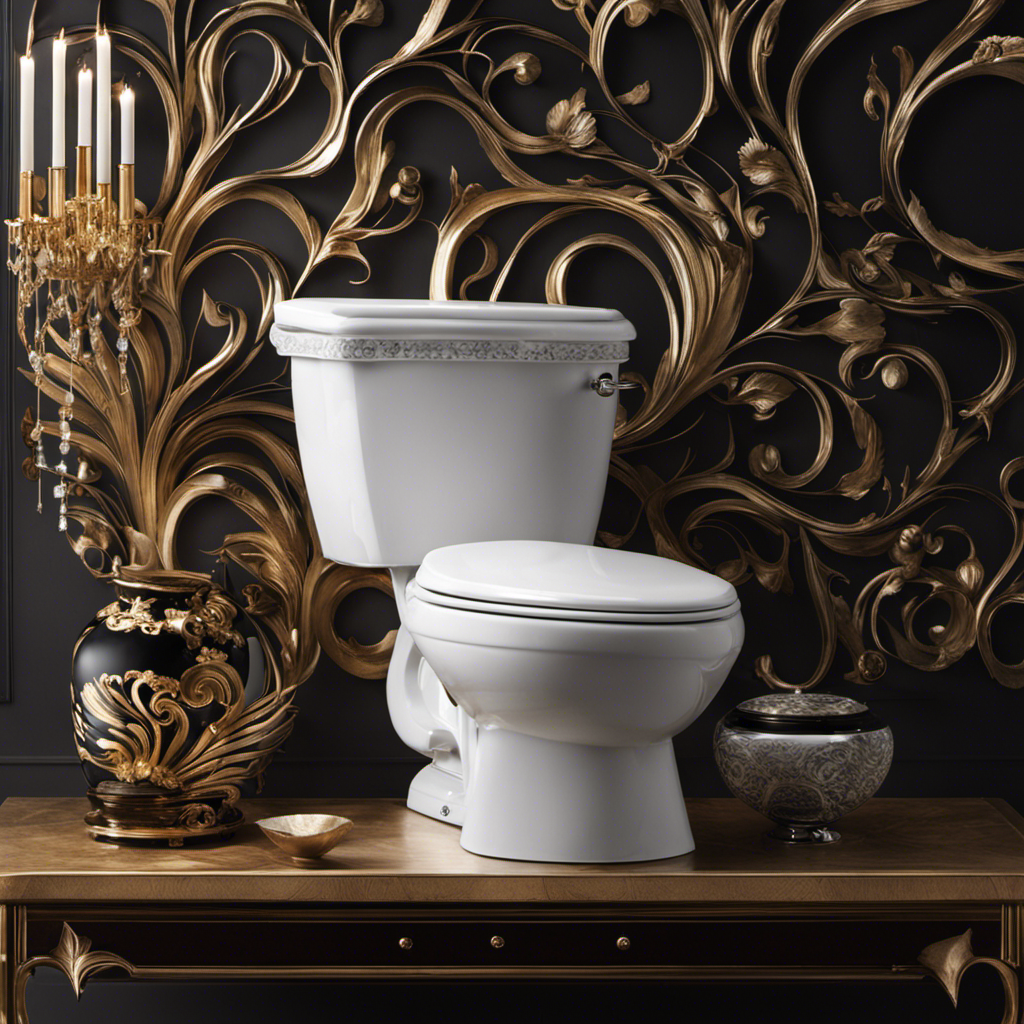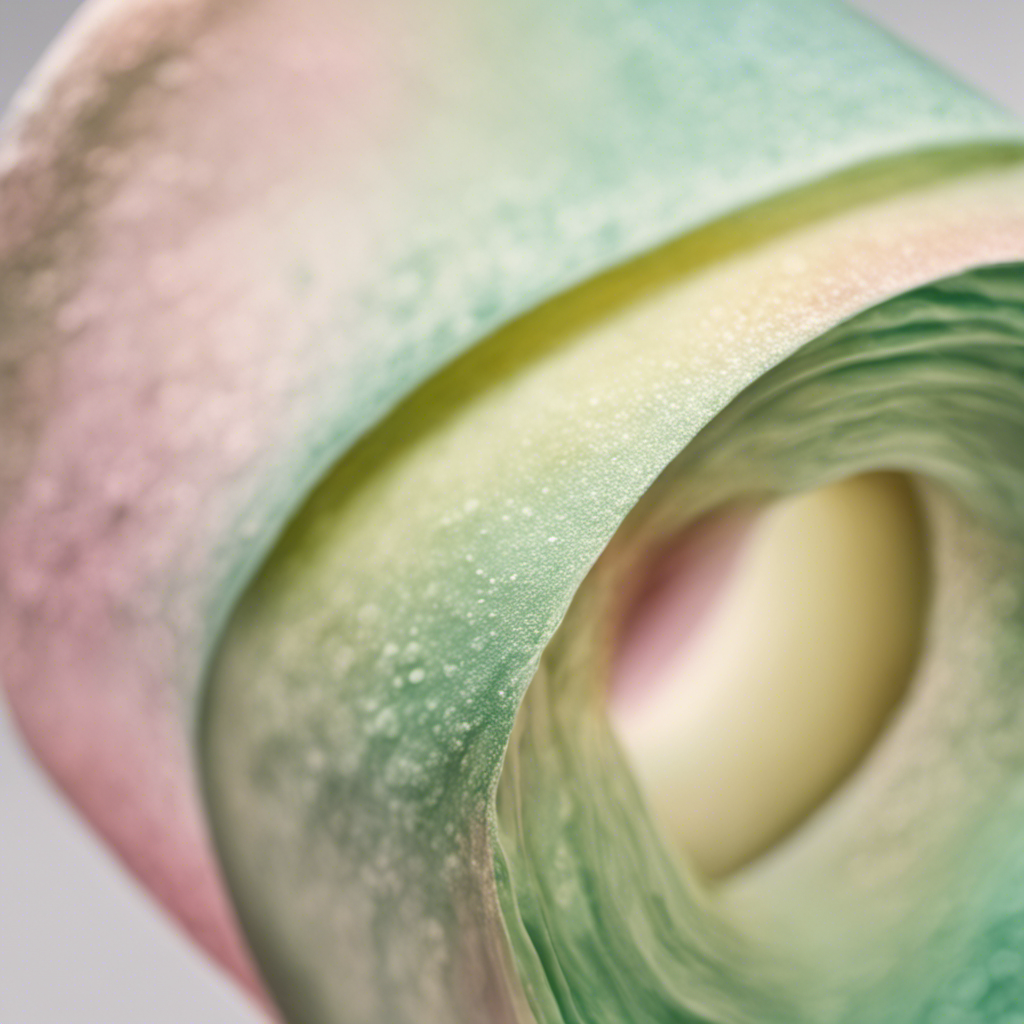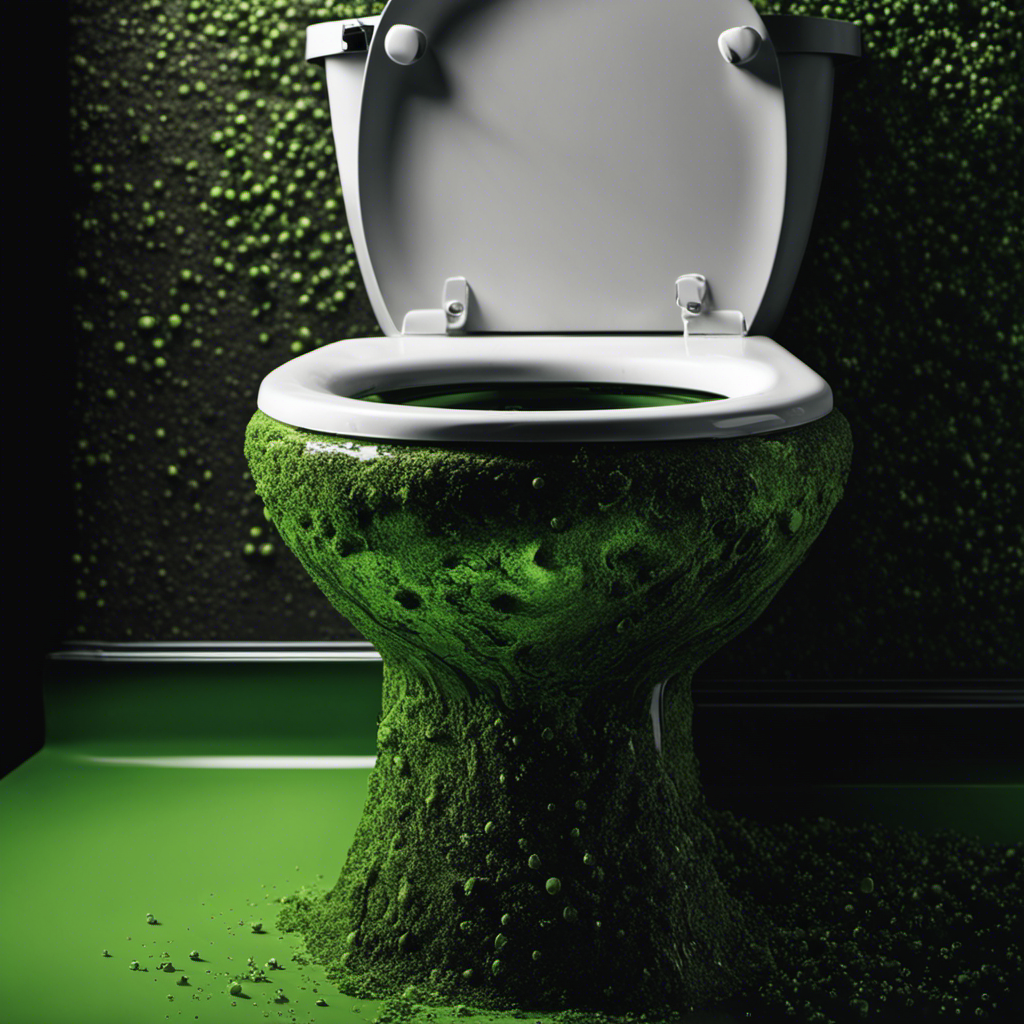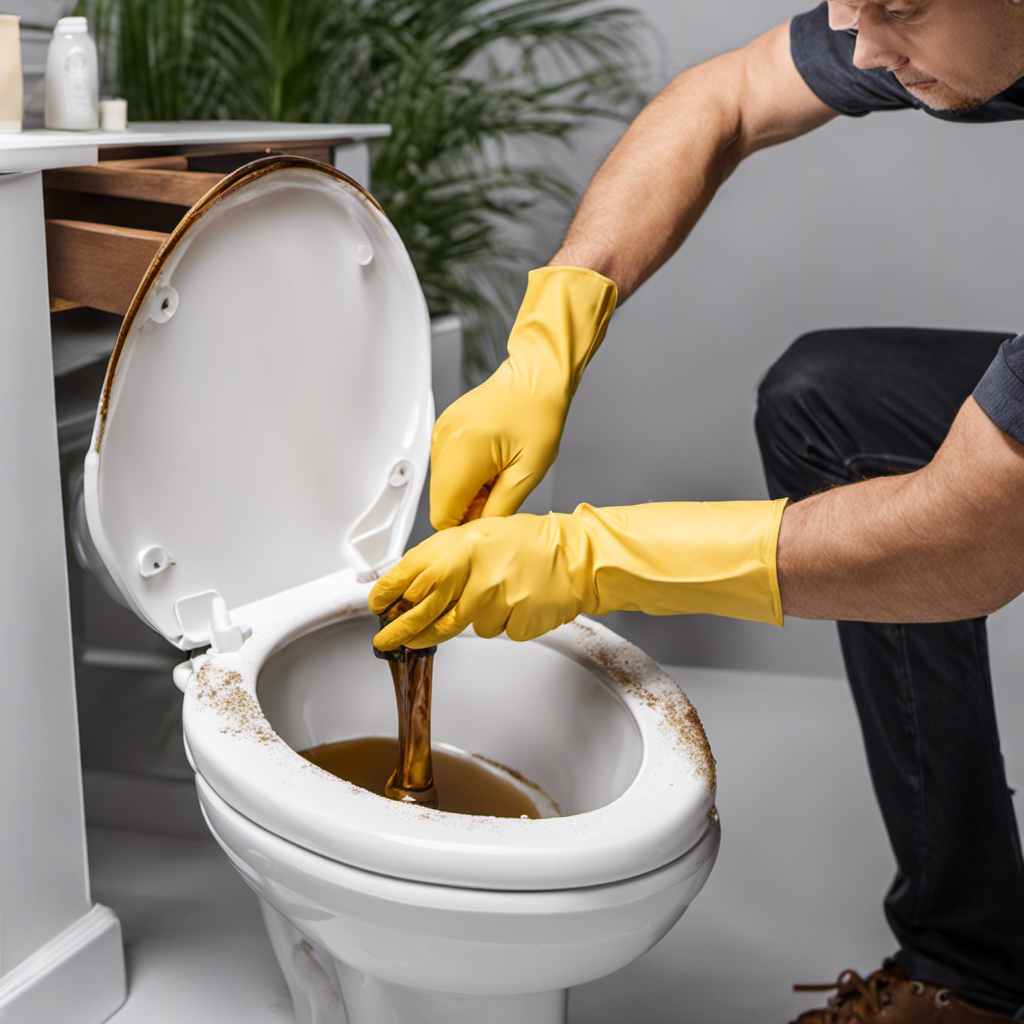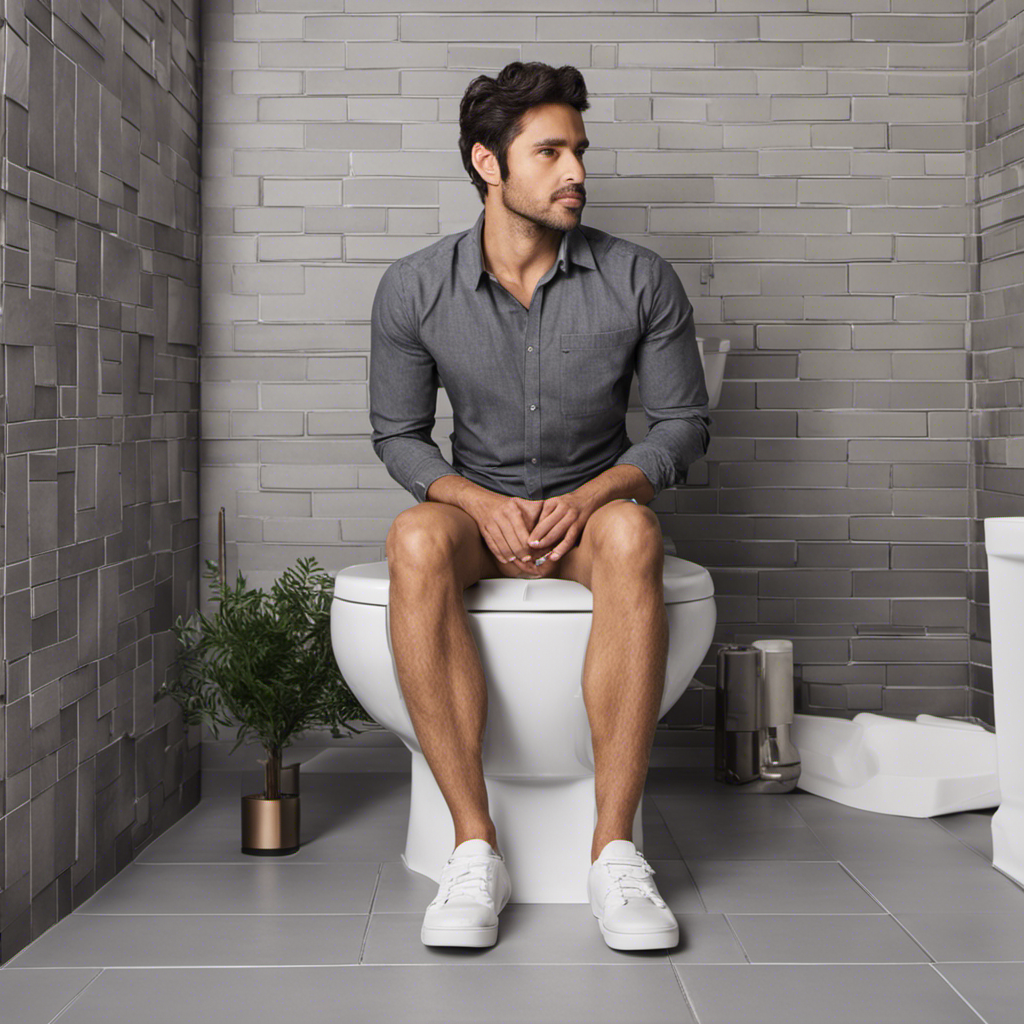Ever wonder what lies beneath the surface of a toilet? Join me as we embark on a journey into the depths of the porcelain throne.
In this article, we will delve into the intricate workings of a toilet, exploring its bowl, tank, and various components. From the flushing mechanism to the siphon jet and trapway, we’ll unravel the mysteries that lurk behind the scenes.
So, fasten your seatbelts (or toilet lids) and get ready for an eye-opening adventure into the inner workings of a toilet.
Key Takeaways
- The toilet bowl is made of porcelain or ceramic and has a smooth and non-porous surface to resist stains and odors.
- The toilet tank contains key components such as the fill valve, flush valve, flapper, overflow tube, and handle, and regular maintenance is important to prevent leaks and ensure proper functioning.
- The flushing mechanism is responsible for initiating the flushing process by lifting the flush valve and releasing water into the toilet bowl.
- The fill valve regulates the flow of water into the tank and includes a float mechanism that detects water level and controls the valve. Regular maintenance of the fill valve is essential for optimal toilet performance.
How Does a Toilet Bowl Function
If you’ve ever wondered how a toilet bowl functions, it’s actually quite simple. The design of the toilet bowl allows for efficient flushing and easy cleaning.
The bowl is made of porcelain or ceramic, which is smooth and non-porous, making it resistant to stains and odors. The shape of the bowl is carefully engineered to create a siphoning effect when the toilet is flushed. This siphoning action pulls water and waste down the drain, effectively removing them from the bowl.
To ensure cleanliness, some toilet bowls have special coatings that prevent bacteria and dirt from sticking to the surface. These coatings make cleaning easier and help maintain the hygiene of the toilet.
Now that we understand how the toilet bowl functions, let’s explore the various components inside the toilet tank.
Exploring the Toilet Tank Components
Take a look inside the tank to see the various components that make up the inner workings of the toilet. The toilet tank is responsible for holding the water that is used for flushing the toilet bowl. It consists of several key parts, including the fill valve, flush valve, flapper, overflow tube, and the handle.
It is important to regularly maintain the toilet tank to avoid any potential issues, such as leaks. To troubleshoot toilet tank leaks, start by checking the fill valve and flush valve for any signs of damage or wear. Additionally, ensure that the flapper is properly sealing the flush valve. Understanding the role of the flushing mechanism is crucial in maintaining a properly functioning toilet tank.
Moving on to the next section, let’s explore how the flushing mechanism works.
Understanding the Role of the Flushing Mechanism
Okay, let’s dive into the flushing mechanism.
This is the part of the toilet that allows us to flush away waste and keep our bathrooms clean and sanitary.
Understanding how the flushing mechanism works and its different parts is crucial to maintaining a properly functioning toilet.
Flushing Mechanism Functionality
The flushing mechanism’s functionality determines how efficiently the toilet flushes. The toilet flush handle mechanism is responsible for initiating the flushing process. When the handle is pressed, it pulls a chain or rod connected to the flush valve.
The flush valve is a rubber or plastic flapper that covers the opening at the bottom of the toilet tank. As the handle is pressed, the flush valve is lifted, allowing water to rush into the toilet bowl. The force of the water pushes waste and wastewater down the drain, effectively flushing the toilet.
After the flush, the flush valve closes, sealing the tank and stopping the water flow. This mechanism ensures proper toilet flush valve operation and efficient flushing performance.
Parts of Flushing Mechanism
When you press the handle, it lifts the flush valve, allowing water to rush into the toilet bowl. The flush valve is a crucial component of the flushing mechanism in a toilet. It is responsible for releasing the water from the tank into the bowl, creating the force needed to flush away waste.
However, if you are facing issues with the water not filling properly in the tank, it could indicate a problem with the fill valve. Troubleshooting the fill valve involves checking for any blockages or leaks and adjusting the water level to ensure proper functioning.
Additionally, maintaining the siphon jet is essential for optimal flushing performance. Regular cleaning of the siphon jet can prevent clogs and keep the toilet functioning smoothly.
The Inner Workings of the Fill Valve
As I delve into the inner workings of the fill valve, I will explore its function and design, water flow control, and common problems and solutions.
The fill valve, a crucial component of a toilet’s flushing system, is responsible for regulating the flow of water into the tank. Its design includes a float mechanism that detects the water level and controls the valve accordingly.
Understanding how this valve operates and addressing common issues like leaks or insufficient water flow can help ensure optimal toilet performance.
Valve Function and Design
Valve function and design determine how the inside of a toilet operates. The valve, specifically the fill valve and the flush valve, play crucial roles in the overall functioning of a toilet.
The fill valve controls the water flow into the tank, while the flush valve is responsible for releasing water from the tank into the bowl during flushing. To ensure optimal performance, regular valve maintenance is essential. This includes checking for any leaks, cleaning or replacing worn-out parts, and adjusting the water level.
Valve troubleshooting is often required when issues arise, such as a constantly running toilet or a weak flush. By understanding the function and design of the valves, homeowners can identify and resolve common problems, ensuring the proper operation of their toilets.
Water Flow Control
To control the flow of water in your toilet, you can adjust the fill valve and flush valve.
The fill valve controls the water level in the tank, while the flush valve regulates the release of water during a flush.
Properly adjusting these valves is crucial for maintaining the optimal water pressure in your toilet.
If the water pressure is too low, it may result in weak flushing power, while high water pressure can cause damage to the toilet’s components.
To maintain the water pressure, regularly inspect the fill valve and flush valve for any signs of damage or wear.
Replace any faulty parts to ensure a consistent and efficient flow of water in your toilet.
Regular toilet maintenance will help you avoid costly repairs and keep your toilet in top working condition.
Common Problems and Solutions
Now that we understand how water flow is controlled in a toilet, let’s discuss some common problems that can arise and their solutions. Toilet bowl maintenance is crucial to ensure proper functioning and prevent issues. Here are some common problems and troubleshooting tips:
| Common Problem | Possible Cause | Solution |
|---|---|---|
| Weak Flush | Clogged or restricted | Use a plunger to clear blockage or remove obstructions |
| Constantly Running | Faulty flapper or fill valve | Replace the faulty component |
| Leaking from Base | Worn out wax ring | Replace the wax ring or call a professional |
| Water Level Too Low | Maladjusted fill valve | Adjust the fill valve to raise the water level |
| Phantom Flushing | Faulty flapper or chain | Replace the flapper or adjust the chain length |
What Happens Inside the Siphon Jet
Inside the toilet, the water and waste are forcefully flushed out through the siphon jet. The siphon jet is a crucial component in the mechanics of a toilet, responsible for creating a powerful suction force to efficiently remove waste.
The siphon jet is located at the bottom of the toilet bowl, and it works by utilizing water flow dynamics. As the water from the tank is released, it flows down into the bowl, creating a high-speed jet. This jet of water creates a vacuum effect, pulling the waste along with it and effectively flushing it down the drain.
The siphon jet mechanics ensure that the water and waste are swiftly and thoroughly removed, making the flushing process efficient and hygienic.
Now, let’s delve into the mystery behind the trapway.
The Mystery Behind the Trapway
The trapway, also known as the passageway, is a hidden component in toilets that plays a critical role in the flushing process. It is responsible for carrying waste from the bowl to the sewer system. Maintaining the trapway is essential to ensure proper functioning of the toilet. Regular cleaning is necessary to prevent clogs and keep the passage clear. Innovative trapway designs have been introduced to improve flushing efficiency and minimize clogging. These designs often feature larger and smoother trapways, allowing waste to flow more easily. Some trapways even incorporate glazing, a ceramic coating that further reduces friction and prevents waste from sticking. By keeping the trapway clean and considering these design innovations, you can ensure your toilet continues to flush effectively.
| Trapway Maintenance Tips | Trapway Design Innovations | Benefits |
|---|---|---|
| Regular cleaning | Larger trapways | Prevents clogs |
| Use toilet brush and cleaner | Smoother trapways | Improves flushing efficiency |
| Consider using enzymatic cleaners | Glazed trapways | Reduces waste sticking |
| Avoid flushing non-flushable items | Advanced water flow technology | Minimizes clogging |
| Schedule professional inspections | Improved waste disposal | Enhances overall performance |
Frequently Asked Questions
How Often Should I Clean the Inside of My Toilet Bowl?
I clean the inside of my toilet bowl once a week to remove stubborn stains and prevent mineral buildup. Regular cleaning with a toilet bowl cleaner and a toilet brush is essential for maintaining cleanliness and hygiene.
Can I Use Any Type of Cleaning Product to Clean the Toilet Bowl?
Can I use any cleaning product to clean my toilet bowl? It’s important to choose the right toilet bowl cleaning products to ensure effective cleaning and avoid damage. There are also alternative methods for cleaning if you prefer.
What Should I Do if the Toilet Bowl Doesn’t Flush Properly?
When the toilet bowl clogs or has a weak flush, I first check the water level and adjust the float valve if necessary. If that doesn’t work, I use a plunger or a toilet auger to clear the blockage.
Is It Normal for the Water Level in the Toilet Bowl to Vary?
Yes, it is normal for the water level in the toilet bowl to vary. It can be caused by various factors, such as clogs, faulty flapper valves, or improper toilet bowl maintenance. Troubleshooting toilet water levels is essential for proper functionality.
Can I Replace the Fill Valve on My Own, or Do I Need to Hire a Professional Plumber?
I can replace the fill valve on my own, but it’s a complex task. Hiring a professional plumber ensures it’s done correctly. They have the expertise to handle any issues that may arise.
Conclusion
In conclusion, the inside of a toilet is a complex system of components working together to ensure proper functionality.
From the flushing mechanism to the fill valve and the siphon jet, each part plays a crucial role in the toilet’s operation.
Through this exploration, we have uncovered the mystery behind the trapway and gained a deeper understanding of how a toilet bowl functions.
As the saying goes, ‘knowledge is power,’ and now armed with this knowledge, we can appreciate the intricacies of something as ordinary as a toilet.
